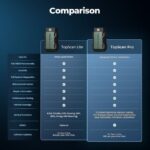Locating the OBD2 port in your car is usually a straightforward task for most modern vehicles. However, when it comes to the 1995 Jeep Grand Cherokee, things might not be as obvious. If you’re trying to diagnose an issue with your trusty SUV using an OBD2 scanner, finding the diagnostic port is the first hurdle. This guide will help you pinpoint the location of the OBD2 port on your 1995 Jeep Grand Cherokee and understand the diagnostic system of this model.
For many car owners and DIY mechanics, the On-Board Diagnostics II (OBD2) system is a crucial tool for vehicle maintenance and repair. It allows you to read trouble codes, understand what might be going wrong with your vehicle, and even clear codes after repairs. Typically, you’d expect to find the OBD2 port easily accessible under the dashboard on the driver’s side. But for a 1995 Jeep Grand Cherokee, you might find yourself searching a bit longer than expected.
It’s important to understand that 1995 was a transition year for OBD systems. While OBD2 became mandatory in the United States for all cars manufactured from 1996 onwards, some 1995 models, including the Jeep Grand Cherokee, might have features of both OBD1 and OBD2 systems, or a system that’s not entirely either.
So, where do you start looking for the diagnostic port on a 1995 Jeep Grand Cherokee? Here are the key areas to investigate:
Under the Hood Location
One potential location, often discussed for this model year, is under the hood. Unlike the standard OBD2 port inside the cabin, some diagnostic connectors for the 1995 Jeep Grand Cherokee, particularly for the engine control module (PCM), can be found in the engine compartment.
- Check by the PCM: Look for a connector near the Power Control Module (PCM). This is often located on the driver’s side fender well, or firewall, under the hood. You might find a pigtail connector coming directly from the PCM. This connector may not be the standard 16-pin OBD2 port, but rather a Chrysler specific diagnostic connector.
Inside the Cabin: Dashboard Area
If you don’t find a standard OBD2 port under the hood, the next place to investigate is inside the vehicle, around the dashboard area.
-
Center Console/Ashtray Area: Some information suggests a diagnostic port could be located near the center console or ashtray. This location might be less obvious and possibly tucked away. You may need to carefully inspect the area behind or beneath the ashtray, or lower center dash.
-
Driver’s Side Under Dash: While less likely to be a standard OBD2 port in the typical location, it’s still worth checking under the driver’s side dashboard. Look for any connectors that might resemble a diagnostic port.
Identifying the Connector Type
When you do locate a potential diagnostic port, it’s crucial to identify the type of connector.
-
OBD2 Connector (16-pin): The standard OBD2 port is a 16-pin, trapezoidal-shaped connector. If you find this, it’s likely your scanner will be compatible.
-
Chrysler Specific Connectors: For 1995 models, you might encounter Chrysler specific diagnostic connectors. These can be 6-pin or other configurations and require adapters or scanners compatible with Chrysler’s older diagnostic protocols. Forum discussions mention a blue 6-point connector for systems like ABS, Body Module, Transmission, and Airbag, and potentially other connectors for engine diagnostics.
OBD1 vs. OBD2 Considerations
A critical point to consider is whether your 1995 Jeep Grand Cherokee is truly OBD2 compliant. While some late 1995 vehicles might have OBD2 capabilities, many are still based on OBD1 or a hybrid system.
-
Check Vehicle Emissions Sticker: Look under the hood for the Vehicle Emissions Control Information sticker. This sticker sometimes indicates OBD compliance.
-
Scan Tool Compatibility: Before tearing apart your dashboard, ensure your diagnostic scanner is compatible with 1995 Chrysler vehicles and supports both OBD1 and OBD2 protocols, or has adapters for older Chrysler connectors. Some scanners might require specific Chrysler adapters to connect to these older systems.
Troubleshooting and Further Steps
If you’re still struggling to find the correct port or connect with your scanner:
-
Consult Your Owner’s Manual: The owner’s manual for your 1995 Jeep Grand Cherokee might offer some guidance on diagnostic port locations, although it may not be explicitly detailed for OBD systems.
-
Online Jeep Forums: Online forums dedicated to Jeep Grand Cherokees (like the one where the original question was posted) are valuable resources. Experienced owners and mechanics often share specific knowledge about these older models.
-
Professional Mechanic: If you’re unsure or uncomfortable, consulting a professional mechanic with experience in older vehicles is always a safe bet. They can quickly locate the port and diagnose your vehicle’s issues.
Finding the “1995 Jeep Grand Cherokee Obd2 Location” can be a bit of a treasure hunt. By checking these potential locations and understanding the diagnostic system nuances of this transitional year model, you’ll be better equipped to connect your scanner and get to the bottom of any issues your Jeep might be experiencing. Remember to verify the compatibility of your scan tool with the specific connector you find to ensure a successful diagnostic process.
